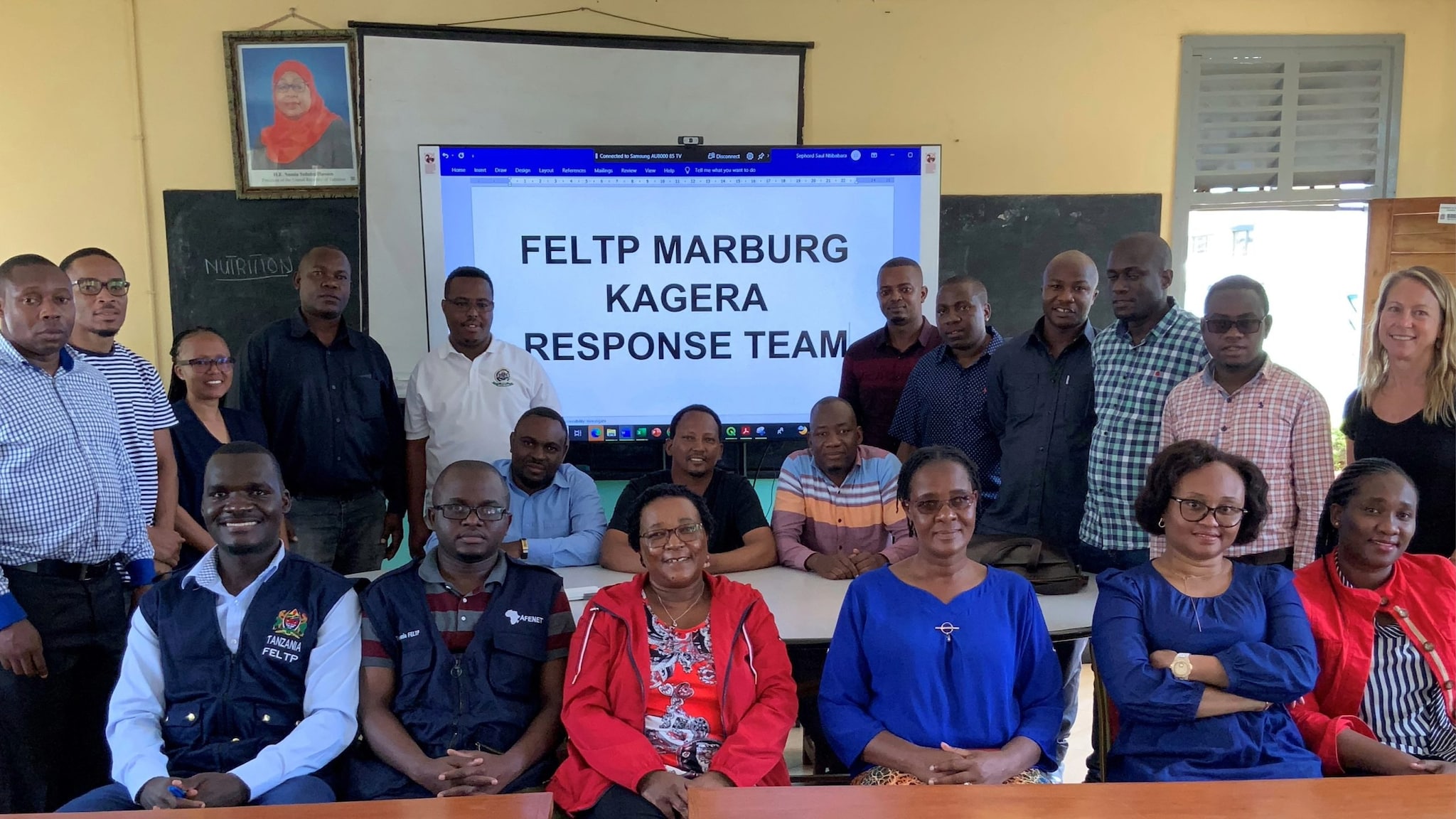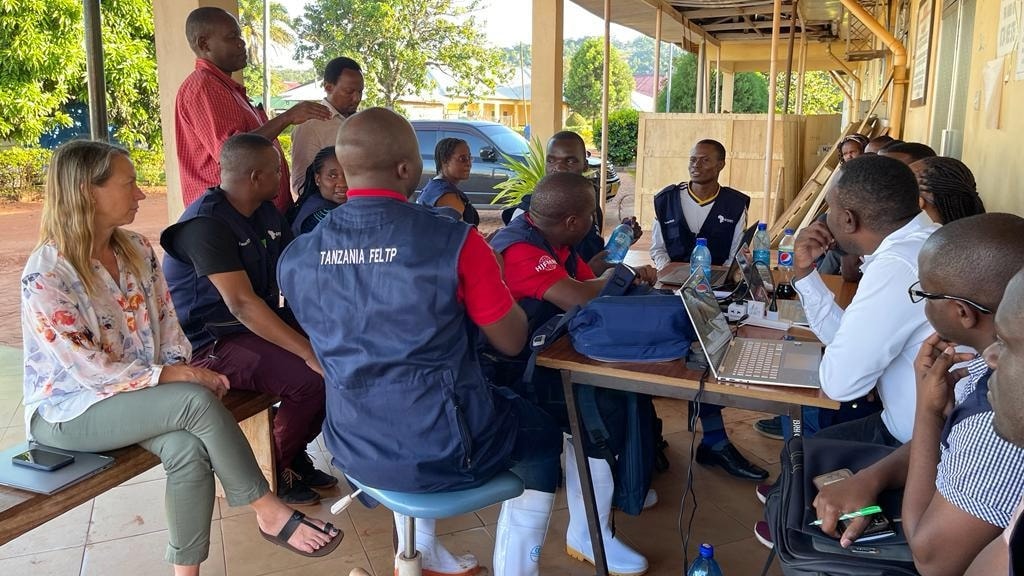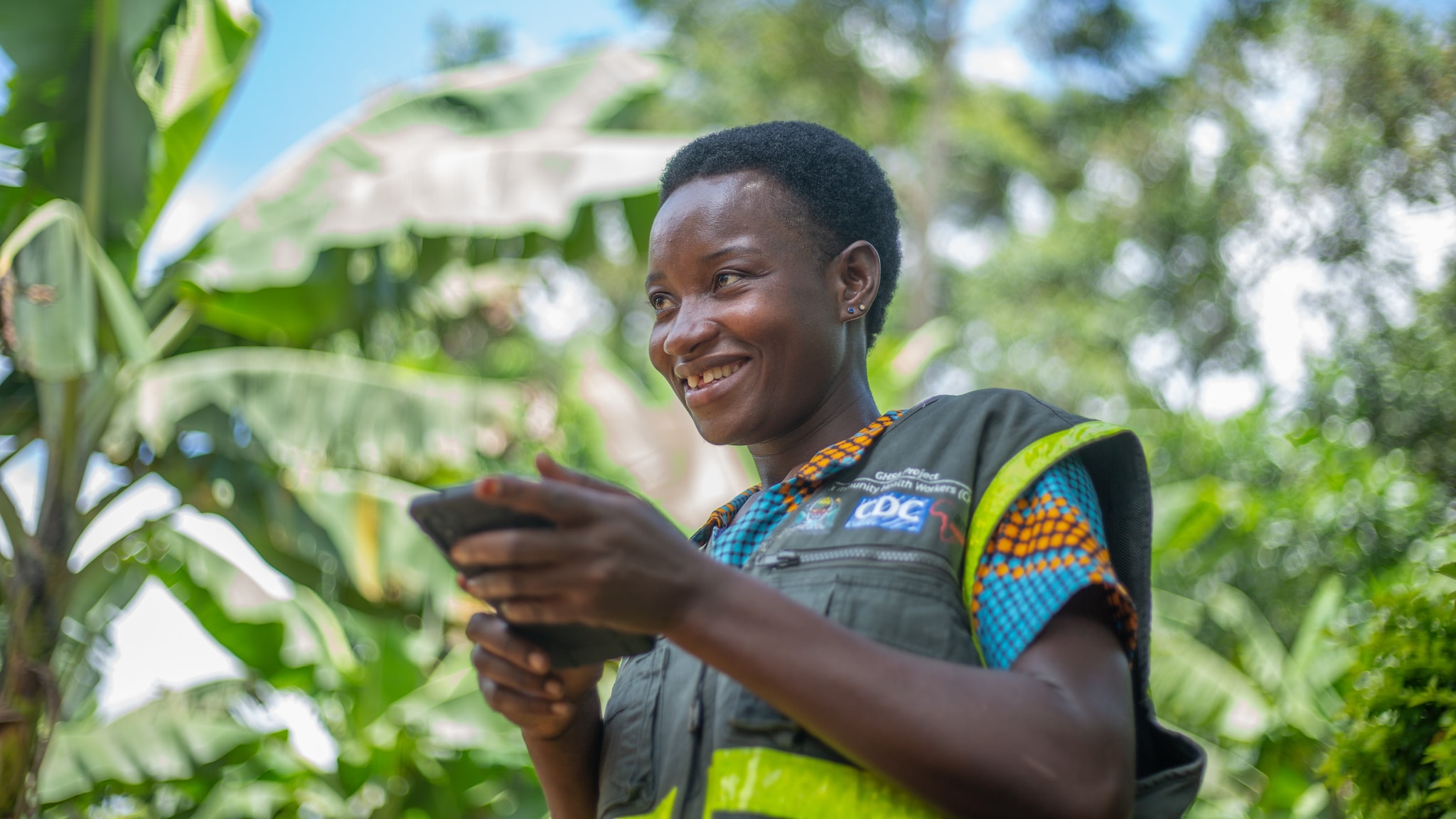At a glance
- Challenges in ending the Marburg Virus Disease (MVD) outbreak in Tanzania in June 2023 included stigmatization of survivors, limited outbreak information, insufficient gear for community health workers (CHWs), and technology gaps.
- CDC and its partners employed a "One Health" approach, emphasizing training, surveillance, and community engagement, to halt the outbreak and save lives.
- The successful containment of the MVD outbreak highlighted the significance of investments in global health security and multisectoral collaboration, stressing the necessity for continuous capacity building to prevent and control future outbreaks.
Addressing the Marburg virus disease outbreak

On June 2, 2023, Tanzania officially declared the end of the Marburg Virus Disease (MVD) outbreak. This outbreak was initially reported on March 21, 2023, in two districts in the north-western Kagera Region. Laboratory analysis confirmed that MVD was the cause of nine cases (8 confirmed, 1 probable), resulting in six fatalities. Notably, this marked Tanzania's first confirmed viral hemorrhagic fever (VHF), specifically the MVD outbreak, since 2008.
The U.S. CDC in Tanzania in collaboration with the Ministry of Health (MOH), Amref Health Africa (Amref), Management and Development for Health (MDH), and other international and national partners, immediately supported the outbreak response to stop the spread of the virus and save lives.
A One-Health approach
The response was implemented using a "One Health" approach, which involved active participation from the Ministry of Health, Presidents Office Regional Administration and Local Government, and the Kagera Regional and Council Health Management Teams. These partners implemented a variety of outbreak response activities, including training on event-based surveillance (EBS), contact tracing, active case searches, infection prevention and control (IPC), case management, sample collection, point of entry screening and dignified burials, risk communication, community engagement, logistics, and mental and psychosocial support.
Impact of a multi-sectoral response

Through CDC's support, MDH and Amref helped the government's Incident Management Team respond to the MVD outbreak. This collaboration led to the intensification of the MVD response initiatives, including the activation of regional and national Public Health Emergency Operation Centers; laboratory confirmation by MOH at the Mobile Laboratory stationed in the Kagera Region; and community sensitization activities that reached over 7,000 people in villages, fishing camps, schools, hotels, clubs, and market areas. A rapid community survey on knowledge, attitude, and practice was also conducted, in which 714 households were visited, and members were interviewed about their understanding of MVD.
CDC in partnership with MOH and many other stakeholders, provided technical assistance in disease surveillance at the sub-national level and offered on-the-ground assistance and weekly virtual mentorship and supervision to regional alert management desk operators. Jointly with MOH and PORALG, partners provided virtual supervision to CHWs and HCWs through WhatsApp groups, facilitating rapid reporting alerts of MVD from the community level.
Development and distribution of RING cards
To enhance case finding efforts, CDC and partners supported MOH in creating a quick reference sheet for clinics, known as "RING" (recognize, isolate, notify, get help adapted from border health) cards. A total of 6,260 RING cards were distributed to various health care professionals, including clinical workers, CHWs, and Risk Communication and Community Engagement (RCCE) teams in the Kagera Region.
The cards outlined symptoms and contact numbers to report alerts. Through these efforts, a total of 243 MVD alerts were promptly managed at the alert desk during the response period, all from the community. Amref also collaborated with FELTP residents to rapidly verify, triage, and investigate the reported alerts.
Challenges and opportunities in the MVD outbreak response
As with any typical outbreak response, several challenges emerged, such as stigmatization of survivors, lack of information about outbreak sources and risk factors, and inadequate gear for CHWs (umbrellas, raincoats, boots). There were additional concerns related to the reporting platform.
The EBS system lacked support for unstructured supplementary service data, which resulted in challenges when reporting alerts from the community level due to high airtime costs. Furthermore, the country did not have electronic contact tracing software and relied on a paper-based spreadsheet.
Knowledge gaps were also noted among the trained HCWs, which called for more physical mentorship and coaching to improve capacities in triaging alerts reported by CHWs. Also, there is a need for ongoing maintenance of the electronic EBS system to ensure real-time triaging of alerts are reported by the community.
Moving forward
The successful and rapid containment of the MVD outbreak highlights the value of Global Health Security (GHS) investments in emergency managements, laboratory capacities, CHWs, HCWs, and public health systems. It also emphasizes the significance of a "One Health" approach for responding to MVD outbreaks.
A key CDC contribution has also been the completion of an electronic contact tracing module developed in DHIS2 and linked to the national integrated diseases surveillance and response (IDSR) system. Collaborative and comprehensive multisectoral efforts will remain vital in future outbreak responses, with continued efforts to build capacities to prevent and control infectious diseases in Tanzania and prevent them from spreading across borders.

